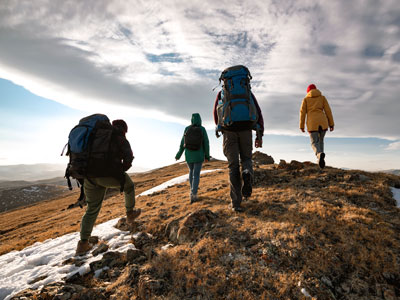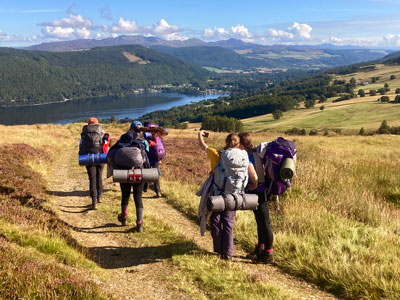Navigation in 2022 - what was new?
by Nigel Williams

In the last few months of 2022 it seems Russia has been able to interrupt GPS signals in specific regions and towns, to try to confuse guided weapons and drones. Imagine the traffic chaos that could cause to a large city if everyone's SatNav gave up simultaneously. Perhaps the ability to use a paper map should not be overlooked.
However, one of the big innovations of the year, just in the nick of time, is the development of a navigation system, initially for urban areas, based on the existing telecoms network of fibre optic cables and radio waves, with timing controlled by an atomic clock. It is able to give a greater level of accuracy down to 10 centimetres in a quicker time than GPS. GPS struggles in cities as the buildings block the view of satellites, so there can be intermittent delays, which has been a concern for driverless vehicles in cities. The project is referred to as "Super GPS" and should provide a long needed back up to the Satellite GPS system.
If it does all go wrong, the new iPhone 14 series has an emergency location rescue message facility if you dial 999 or 112. Similar to a spot device, it works directly off a satellite without the need for cellular or Wi-Fi coverage. It has only been available for a month or so, but, already, someone was rescued in North West Alaska after sending a message over this system.

About 10 years ago several large surveys were carried out by Scottish Natural Heritage (now Nature Scot). which found that 73% of walkers did not want to leave a path and around 25% only wanted to walk on signposted routes. If the majority of the 56% in the OS survey were on paths, which would seem likely, that is even more concerning. In my experience, one of the most common reasons for attendance on a navigation course is that the participants had recently been lost and realise they needed some skills, so it looks like business is going to be good for a while for navigation course providers and organisations such as the National Navigation Award Scheme.
One solution given to avoid getting lost was to be able to "give a 4 Figure grid reference". I'm not quite sure how that is going to help when you are lost in the mist or a forest. Not sure rescue teams will welcome the possibility of having to search 1 Sq km either.
We never stop learning. Two experiences I have had this year made an impression on me. I was working for Hillgoers, an outdoor company near Aberdeen, delivering some bronze Duke of Edinburgh Award expedition training. The syllabus has considerable overlap with the National Navigation Award Scheme Bronze level. The school had asked the company to deliver both, so we used an orienteering map and steered away from the traditional focus of covering around 15km per day carrying a heavy rucksack with all the camping gear. We focused on games and exercises to develop navigation competence and confidence, reduced the rucksack carrying to about 5km, and included an overnight wild camp.

It was a revelation after years of seeing pupils being disinterested in navigation, because the heavy rucksack dominated their capacity to learn skills, and the 1:50,000 map scale was often unrelatable for them. It was also fun, and 20 more pupils in the school have signed up for the Silver award in 2023 than did so last year.
Another personal revelation was trying an approach to teaching navigation that would demonstrate our spatial awareness and cognitive navigation ability. Before looking at a map at the start of a navigation course, I tried taking novices around a path loop of a couple of km. without a map, playing a bit of I spy, challenging the participants observation, sense of direction and distance. Then, back in the classroom, I asked them to draw a map of the journey from memory and compare it to the real map. If anyone was really struggling, as an alternative, they could be given the map to draw on where they think they had been. Then we repeated the walk with the map, identifying the features they had previously observed.
It is amazing how capable our cognitive navigation skills are. This places observation of the terrain as a priority over the map. It is effective, builds confidence and seems to set a behaviour where people spend less time with their noses in the map and more time looking around them. This process also feels more in tune with how we navigated for millennia, with maps only appearing as another tool of navigation for recreation in the last 100 years.
Lastly I came across a new word for lost; "waylosing", the opposite of "wayfinding". Finding your way - losing your way, seems to make sense.
And on Facebook a page dedicated to a group of people who are afflicted with a serious lack of spatial awareness and cognitive navigation skills - a condition recognised in 2009 as Directional Disorientation or Developmental Topographical Disorientation.
Have a great Christmas and New Year.
Return to the Navigation Blog
 FREE UK delivery
FREE UK delivery For Christmas delivery information
For Christmas delivery information 







